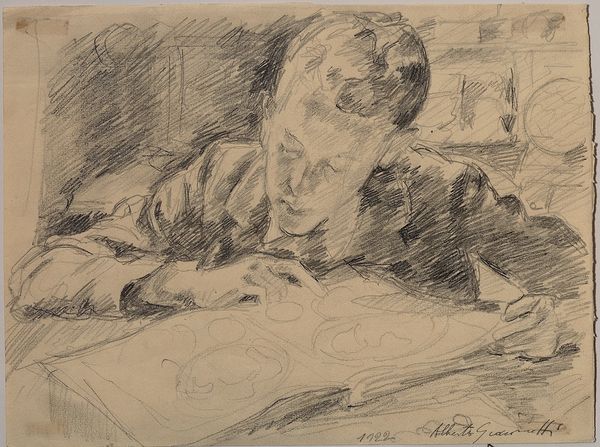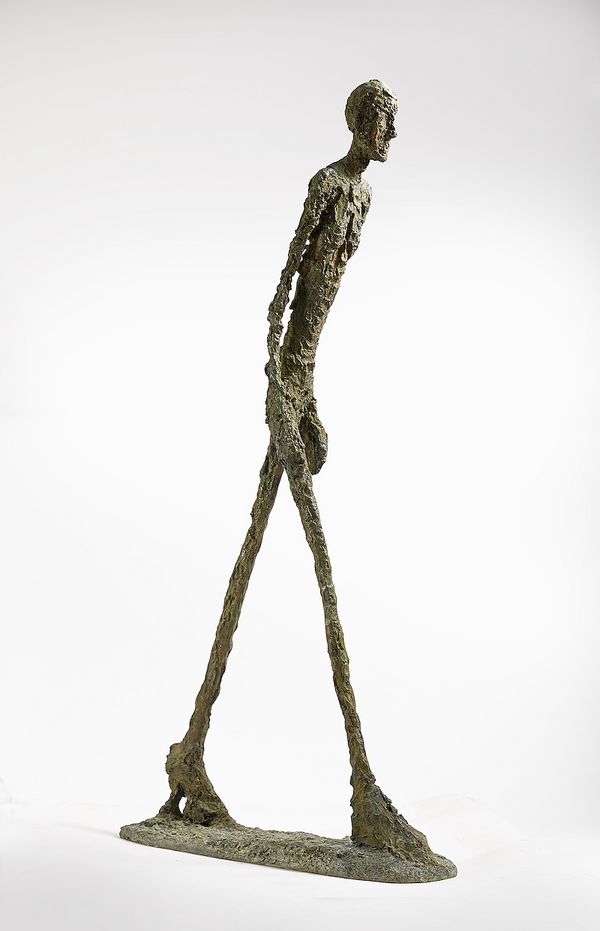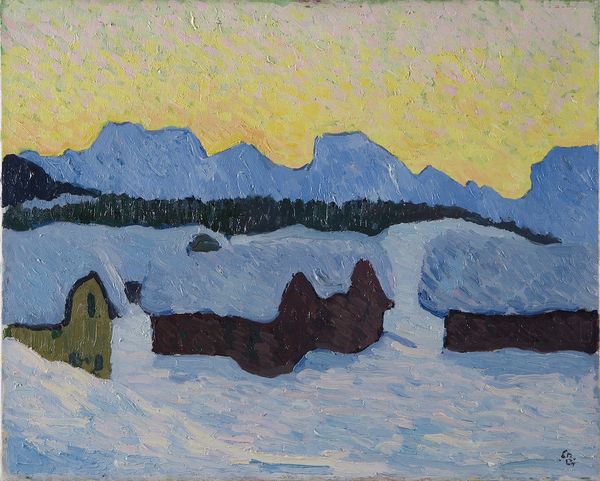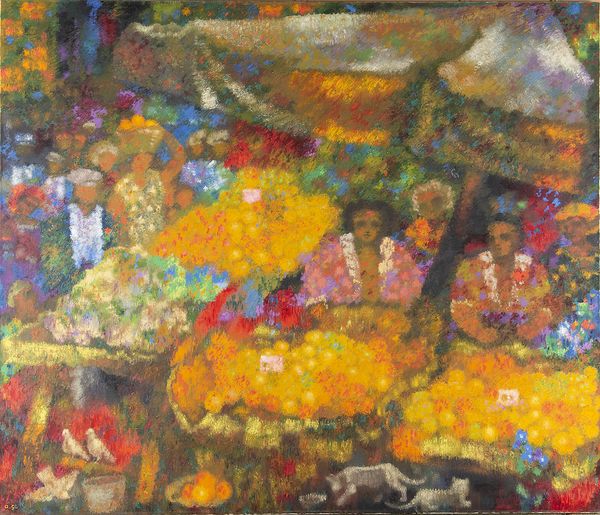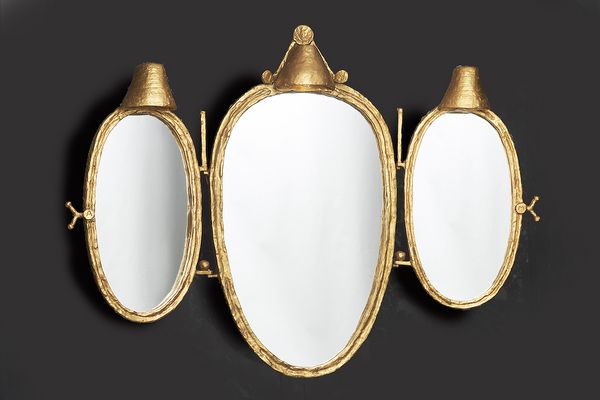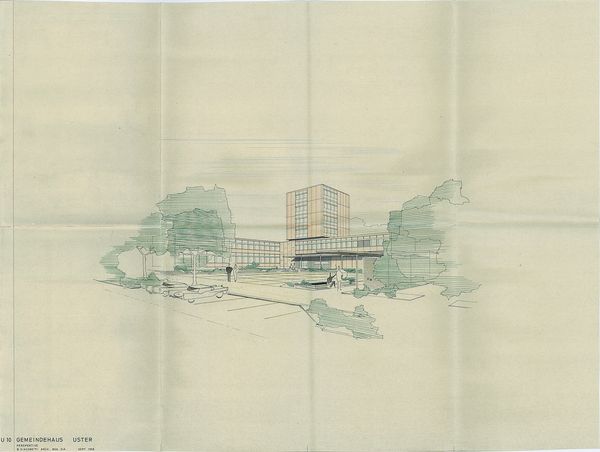Alberto Giacometti, Bruno à l_Atlas et au Violon, 1922 Galerie Maeght© Succession Giacometti (Fondation Giacometti, Paris et ADAGP, Paris) 2021.
Alberto Giacometti
Alberto Giacometti, Homme qui marche I Photo Claude Germain © Succession Giacometti (Fondation Giacometti, Paris et ADAGP, Paris) 2021.
One of the most important artists of the twentieth century, Alberto Giacometti was a Swiss sculptor, painter, and draughtsman. He was a pioneer and leader in the surrealist movement in the 1930s, and his signature bronze figures, lean-limbed and vulnerable, have become indelible representations of post-war trauma and existentialism. Of these iconic sculptures, the artist explained, “I swore to myself I wouldn't let my statues shrink by even an inch. And then this happened: I managed to keep the height, but the statue was left very thin, like a rod, threadlike."
Giovanni Giacometti
Giovanni Giacometti, Paysage Enneigé, 1908 © Succession Giacometti (Fondation Giacometti, Paris et ADAGP, Paris) 2021.
Born in Switzerland, Giovanni Giacometti studied art in Munich in the 1880s, eventually traveling to Paris. Inspired by his travels, Giovanni experimented with Impressionist, Post-impressionist, and Fauvist styles. His expressive canvases depicted Swiss scenes, lakes, and landscapes, rich in vibrant color that reflected the influence of contemporaries like Paul Gauguin. Although lesser-known than his more prominent sons, Alberto and Giacometti, he showed in significant exhibitions in Paris, Zurich and Munich.
Augusto Giacometti
Augusto Giacometti, Le marché aux oranges à Marseille, 1933 © Bündner Kunstmuseum Chur.
Giovanni’s cousin, Augusto, was born in Stampa, Switzerland. He studied at the School of Applied Arts in Zurich and, like his cousin, traveled to Paris and, later, Florence. His final move was back to Zurich and his influence—at the forefront of several avant-garde movements—has been recorded in his abstract compositions and “chromatic fantasies.”
Diego Giacometti
Alberto Giacometti, Homme qui marche I Photo Claude Germain © Succession Giacometti (Fondation Giacometti, Paris et ADAGP, Paris) 2021.
Alberto Giacometti’s brother, Diego, was a designer and sculptor. After a landmark trip in 1935 to Stampa, Diego began his first animal sculptures. It was shortly after this trip that the younger Giacometti also started making furniture. Diego modeled his maquettes in plaster (as opposed to clay or wax, which was the more common choice for sculptors) and cast his furniture in bronze, a departure from most metal furniture at the time, which was cast in iron. Illustrious clients included the Maeght and Noailles families as well as the decorator Jean-Michel Frank, who commissioned Alberto (assisted by Diego) to create plaster lighting and fireplace accessories.
Bruno Giacometti
Bruno Giacometti, Stadhaus Plan, 1961.
Son of Giovanni, brother of Alberto and Diego, Bruno Giacometti was a gifted musician, though he chose to pursue a career in architecture. He trained at ETH Zurich (the Swiss Federal Institute of Technology) and in 1930, joined the Zurich firm, Karl Egender. Influenced by the Bauhaus, he was a proponent of functionality and form. He designed hospitals, churches, and residences, though he is perhaps best known for designing the Swiss Pavilion at the Venice Biennale.
Visit La Fondation Maeght for more information >
Recommended Reading
The Legendary Origins of a 'Grecque' Table Lamp >
The Art Lover's Guide to River Towns >
